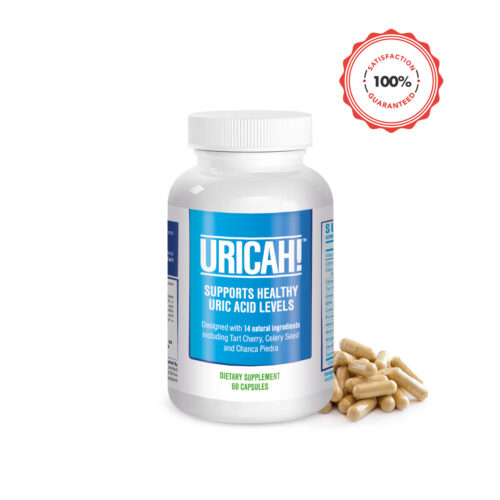Your family history might hold more clues about your gout risk than you realise. While many people think gout is simply a result of too much rich food and alcohol, emerging research reveals that your ethnic heritage plays a crucial role in determining how your body handles uric acid. For Australians from diverse backgrounds, understanding these connections can be the key to better prevention and management.
Australia’s multicultural population provides unique insights into how different genetic backgrounds influence gout susceptibility. What researchers have discovered might surprise you – and could change how you approach your health.
The Genetic Lottery: How Your Ancestry Affects Uric Acid Processing
Your kidneys are responsible for filtering excess uric acid from your blood, but not everyone’s kidneys work with the same efficiency. Genetic variations passed down through generations can make some people natural “high retainers” of uric acid, while others process it more effectively.
EMERGENCY GOUT RELIEF PROTOCOL
7 tips you can use right now for immediate gout relief.
Research conducted across Australian populations reveals striking differences. People of Polynesian descent, including those from Samoa, Tonga, and Fiji, show genetic variants that can reduce uric acid excretion by up to 25%. This isn’t a design flaw – these genetic traits likely evolved as survival advantages in different environments, but they create significant challenges in modern dietary contexts.
The statistics are sobering: Pacific Islander men in Australia now experience gout rates that are three to four times higher than European Australians. Women from Pacific Islander backgrounds also show dramatically elevated rates, though typically developing gout later in life than men. What makes this particularly concerning is that Pacific Islander Australians often develop gout at younger ages – sometimes in their twenties and thirties – compared to other populations where onset typically occurs after age 40.
This health crisis stems from a perfect storm of genetic predisposition meeting modern lifestyle factors. Traditional Pacific Island diets were naturally protective against gout, featuring fresh fish, coconut, taro, breadfruit, and tropical fruits – all foods that support healthy uric acid levels. However, the transition to Western dietary patterns, combined with reduced physical activity and increased stress, has created unprecedented health challenges for these communities.
Aboriginal and Torres Strait Islander Australians also show distinct genetic patterns affecting uric acid metabolism. Studies indicate that traditional genetic adaptations, once beneficial for survival in harsh Australian environments, may now contribute to higher gout rates when combined with Western dietary patterns.
Interestingly, many Asian populations carry protective genetic variants. People of Chinese, Japanese, and Korean descent often have more efficient uric acid transport genes, which may explain lower gout rates in these communities – though this protection can be overwhelmed by lifestyle factors.
The Migration Effect: When Traditional Diets Meet Modern Australia
One of the most fascinating aspects of gout research in Australia involves studying how migration affects uric acid levels. First-generation immigrants often maintain lower gout rates, closely reflecting patterns from their countries of origin. However, second and third-generation Australians from the same ethnic backgrounds frequently show dramatically increased rates.
This “migration effect” highlights how environmental factors interact with genetic predisposition. Traditional Mediterranean diets, rich in olive oil, vegetables, and moderate wine consumption, appear protective against gout. However, Mediterranean Australians who adopt typical Australian dietary patterns lose much of this protection.
Similarly, traditional Asian diets emphasising rice, vegetables, and moderate amounts of seafood typically support healthy uric acid levels. Yet Asian Australians consuming more Western foods – particularly processed meats, sugary drinks, and excessive alcohol – can experience rapid increases in gout risk despite their genetic advantages.
The most dramatic changes occur in Pacific Islander communities. Traditional island diets based on fresh fish, tropical fruits, and root vegetables are naturally low in gout-triggering compounds. The shift to processed foods, combined with genetic predisposition, creates a perfect storm for elevated uric acid levels.
Regional Variations Across Australia
Australia’s vast geography creates interesting regional patterns in gout prevalence that often correlate with ethnic settlement patterns and local food cultures. Northern Australia, with its large Indigenous and Pacific Islander populations, shows higher overall gout rates, while areas with predominant European populations typically show moderate levels.
Cities with large Asian populations, particularly Sydney and Melbourne, demonstrate how cultural food practices can override genetic risk factors. Areas where traditional Asian markets and restaurants remain prevalent show lower gout rates among Asian Australians compared to regions where Western fast food dominates.
Rural communities present their own challenges and advantages. While access to fresh, traditional foods may be limited, rural Australians often maintain more active lifestyles that can help offset genetic predisposition to elevated uric acid levels.
Cultural Food Practices That Influence Risk
The way different cultures prepare and consume food significantly impacts uric acid production. Many traditional cooking methods actually reduce the purine content of foods, while modern preparation techniques can increase it.
Traditional slow-cooking methods common in Mediterranean and Middle Eastern cuisines often break down purines, making foods safer for people prone to gout. The emphasis on fresh herbs and spices in these cuisines also provides natural anti-inflammatory compounds that may help manage uric acid levels.
Asian fermentation techniques, used in foods like miso and tempeh, can alter the purine profile of foods in complex ways. While some fermented foods become higher in purines, others develop compounds that may actually help with uric acid processing.
Pacific Islander traditional food preparation, including earth oven cooking and natural preservation methods, typically maintains the low-purine nature of traditional foods. However, modern cooking methods and the addition of processed ingredients can dramatically change the uric acid impact of these meals.
Understanding Your Personal Risk Profile
Knowing your ethnic background provides valuable insight into your potential gout risk, but it’s only part of the picture. Family history within your ethnic group can be particularly telling – if your grandparents or parents experienced gout, your risk increases significantly regardless of your overall ethnic risk profile.
However, genetic predisposition isn’t destiny. Environmental factors often outweigh genetic risk, which means that people from high-risk ethnic groups can still maintain healthy uric acid levels through appropriate lifestyle choices.
Consider creating a personal risk assessment that includes both your ethnic background and your current lifestyle factors. High genetic risk combined with protective lifestyle choices often results in better outcomes than low genetic risk with poor lifestyle habits.
Food Choices for Different Ethnic Risk Profiles
Understanding your ethnic risk profile can help guide more effective food choices:
For High Genetic Risk Groups (Pacific Islander, Aboriginal Australian):
Low Risk Foods:
- Fresh fish like barramundi, whiting, and flathead
- Sweet potato, taro, and cassava
- Tropical fruits including mango, pineapple, and pawpaw
- Leafy greens and native vegetables
- Lean chicken breast and pork tenderloin
Moderate Risk Foods:
- Shellfish like prawns and crab (consume occasionally)
- Lean beef and lamb cuts
- Legumes and beans
- Mushrooms and asparagus
High Risk Foods:
- Organ meats and game meats
- Sardines, anchovies, and mackerel
- Beer and spirits
- Processed meats and sausages
- Gravies and meat extracts
For Moderate Genetic Risk Groups (European, Middle Eastern):
These groups can typically tolerate moderate-risk foods more frequently while still avoiding high-risk options. The Mediterranean diet pattern often works well, emphasising olive oil, vegetables, and moderate wine consumption.
For Lower Genetic Risk Groups (Many Asian populations):
While genetic protection exists, it can be overwhelmed by poor dietary choices. Focus on maintaining traditional dietary patterns when possible, particularly the emphasis on vegetables, rice, and moderate protein portions.
The Role of Alcohol Across Cultures
Different cultural attitudes toward alcohol significantly impact gout risk. Mediterranean cultures’ tradition of moderate wine consumption with meals appears less problematic than the binge-drinking patterns more common in some other cultures.
Beer consumption, popular across many Australian communities, poses particular challenges due to its high purine content and the way alcohol affects uric acid processing. Pacific Islander and Aboriginal Australian communities, which historically had limited alcohol exposure, may be particularly vulnerable to alcohol-related gout triggers.
Traditional alcoholic beverages from various cultures also vary in their gout risk. Rice wines and sakes typically pose less risk than beer or spirits, while traditional fruit wines may offer some protective compounds.
Working with Your Heritage, Not Against It
Rather than viewing ethnic predisposition as a limitation, consider it valuable information for making informed health choices. Many traditional practices from various cultures actually support healthy uric acid levels – the challenge is maintaining these practices in a modern Australian context.
Explore traditional foods and preparation methods from your cultural background that align with low-purine eating. Many cultures have traditional herbs and spices that offer anti-inflammatory benefits, and traditional physical practices that support overall metabolic health.
Consider connecting with cultural communities that maintain traditional food practices. Community gardens, cultural centres, and traditional cooking classes can help you access protective dietary patterns while maintaining cultural connections.
Practical Steps for All Ethnic Backgrounds
Regardless of your genetic risk profile, certain strategies benefit everyone. Stay well-hydrated, maintain a healthy weight, and limit processed foods. Regular physical activity helps all ethnic groups manage uric acid levels effectively.
Monitor your individual response to different foods. While general ethnic patterns exist, individual variation within ethnic groups can be significant. Keep a food and symptom diary to identify your personal triggers.
Consider genetic testing if you’re from a high-risk ethnic group and have strong family history. Understanding your specific genetic variants can help guide more personalised prevention strategies.
Natural Support for Diverse Populations
For Australians from all ethnic backgrounds concerned about gout and uric acid levels, natural supplements can provide valuable support alongside cultural dietary practices. Uricah offers a comprehensive approach to uric acid management with 14 natural ingredients including tart cherry, celery seed, and turmeric – compounds that have been used across various traditional medicine systems.
The beauty of Uricah’s formulation lies in its transparency and cultural inclusivity. Every ingredient is clearly listed with exact amounts, respecting the diverse dietary needs and restrictions of Australia’s multicultural population. Whether you’re maintaining traditional Asian dietary principles, following Mediterranean patterns, or adapting Pacific Islander food traditions, Uricah provides consistent natural support that complements rather than conflicts with cultural food practices.
THIS IS YOUR URICAH MOMENT
Our 14 potent, natural ingredients support the body in lowering uric acid levels, alleviating the excruciating pain and discomfort caused by gout.
URICAH™ features powerful ingredients used over thousands of years to fight gout such as Tart Cherry, Celery Seed and Chanca Piedra.
Get back on your feet and live pain free with URICAH™.
LEARN MORE

